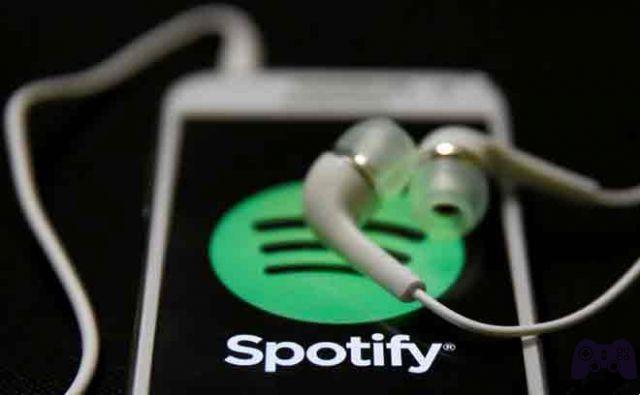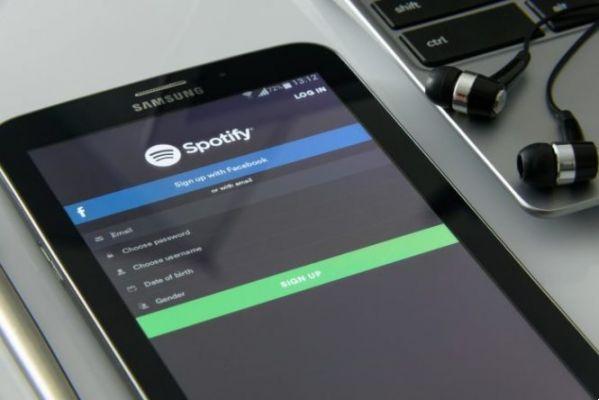
Spotify is one of the best music streaming services available, especially if you like lesser known artists. On the other hand, nothing ruins music faster than frequent pauses and buffering. This problem is common on Spotify and the problems can be many, but the good news is that they are all easy to fix.
If Spotify pauses a song on its own and interrupts your listening experience, here's what to do.
Turn off the power saving mode
All mobile devices have a low power mode option that reduces background activity in order to conserve battery life. In many cases, power saving mode stops background updating for apps, disables mail arrival, and stops downloads. In other cases, it can interfere with your Spotify stream.
If you are listening to Spotify with the power saving mode enabled, turn it off. On an iPhone, this is as simple as swiping down from the top right corner of the screen and tapping the battery icon. You can also access the low-power mode by going to Settings > Battery > Method a low consumption.
Android devices handle this a little differently. The setting on Android devices is called “Battery saver”. To access it, tap the icon Settings and then tap Battery saver. You should see a cursor somewhere on the screen. Make sure it's set to location off.
This setting can interfere with Spotify on any device, be it a phone or a tablet. If you notice that Spotify keeps stopping while listening to music, try turning off the power saving mode and make sure you have enough charge.
Turn off data saver mode
Spotify has a built-in Data Saver mode which reduces the amount of data the app uses when streaming over cellular networks. This mode can potentially interfere with playback quality and cause pauses on Spotify.
To enter Data Saver mode, tap the gear icon in the upper right corner of the screen, then tap Data saving from the list. Make sure the slider is set to off.
Restart your device
One of the easiest ways to fix Spotify pausing by itself is to reset your device. You can soft reset a device or select Restart from the Start menu on your computer, but it is often best to completely shut down the device for at least 15 seconds before restarting it.
This operation clears all data stored in temporary memory and is one of the most recommended ways to correct problems like this. After 15 seconds, turn your device back on and try Spotify again.
Update your device
There are times when Spotify doesn't work properly after an update, especially after OS updates. Make sure you keep your phone fully updated with the latest version of the operating system.
One option is to enable automatic updates. Another is to manually check if an update is currently available. To do this on iOS, go to Settings> General> Software Update. On Android, go to Settings, select System updates and select Check for system updates.
Sign out of the app anywhere
Several Spotify users have reported that logging out of their accounts on each device before logging in again can fix problems with Spotify streaming stopping and pausing on its own.
To do this, go to your account overview page. Once on this page, scroll all the way down and select the button Go out anywhere. Once this is done, you will need to log into your account again.
Note that this option doesn't include Spotify partner devices, so it won't disconnect you from your PlayStation or Sonos devices.
If your Spotify account is in use on some other device, choppy playback may occur. By logging out of your account from all devices, you will also eliminate the possibility that another user may have unauthorized access to your account.
Connect or disconnect from WiFi
Spotify lets you choose from multiple quality levels for streaming your music.
The entry level for music is 160 kbps and requires upload and download speeds of 384 kbps. The next level is 320kbps and requires 512kbps upload and download speeds. For lossless quality streaming, you need at least 2 Mbps on the bottom and 0,5 Mbps on the top.
These speeds need to stay at this level or more consistently or the quality of your music will falter, often resulting in pauses. In many cases, 3G is not enough for lossless quality.
If you are streaming music at the highest possible quality and not getting the desired results, try connecting to WiFi. If that's not possible, lower the quality of your stream. You should also make sure that Spotify is not automatically attempting to stream in higher quality than it is capable of.
To do this, open Spotify and tap the gear icon in the top right corner of the screen. Touch Music quality and look under the header streaming. By default, it will be selected Automatic. Choose from Low, Normal, High and Extra High. If your app crashes often, select Low or Normal.
Reinstall Spotify
If you have tried these other methods and they don't work for you, remove Spotify from your device. On a computer, this means uninstalling the program. On a phone, delete the app. Remove all traces of Spotify and then download the app again.
Errors may occur during installation that could cause playback problems. By removing the app and reinstalling it, you can work with a fresh and updated installation.
Check your AirPods
If you're using Bluetooth headphones, make sure none of the settings affect your experience. For example, Apple's AirPods will pause the song if one is removed from the ear. If your Bluetooth device is not working properly, Spotify may be paused.
To check this, listen to some songs without headphones and then listen with headphones. If Spotify only stops when you're using headphones, that's a good sign that something is wrong with your Bluetooth device.
Further Reading:
- How to disconnect Spotify from Alexa
- How to delete Spotify account
- How to listen to Spotify offline on mobile and Windows 10
- Google Assistant: how to control your Chromecast with your voice to watch Netflix, YouTube, Spotify and ...
- How to download and install Spotify on Chromebook






